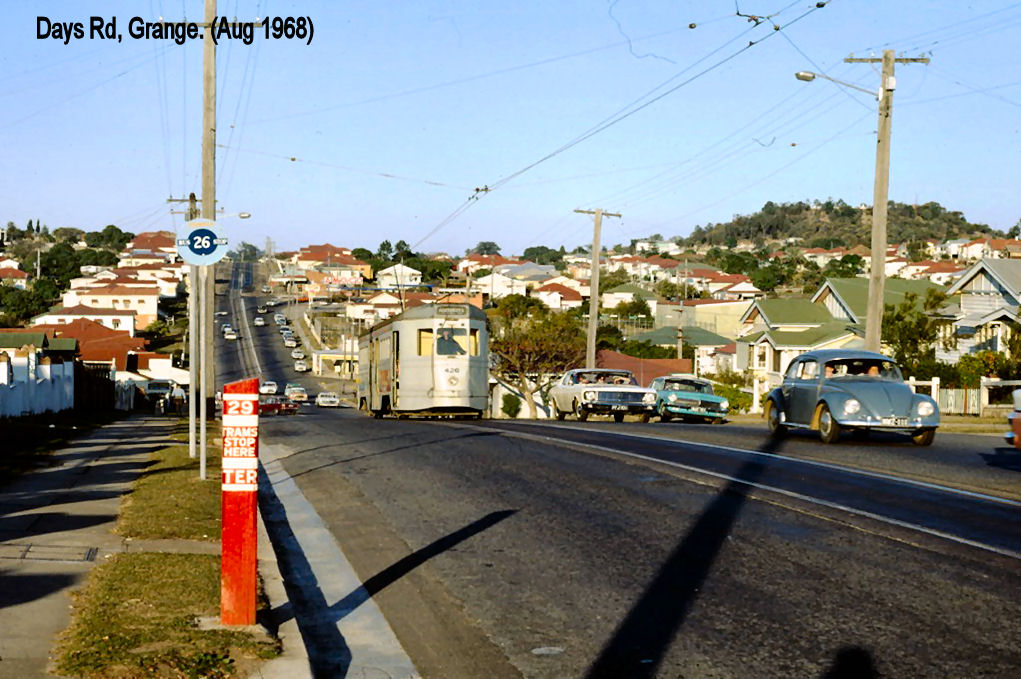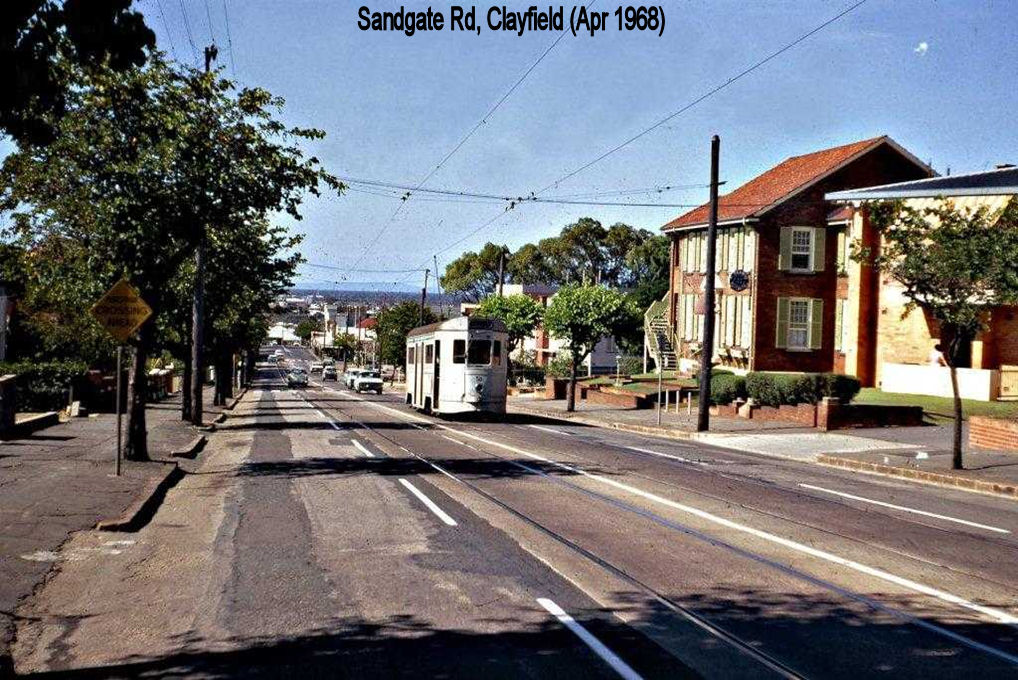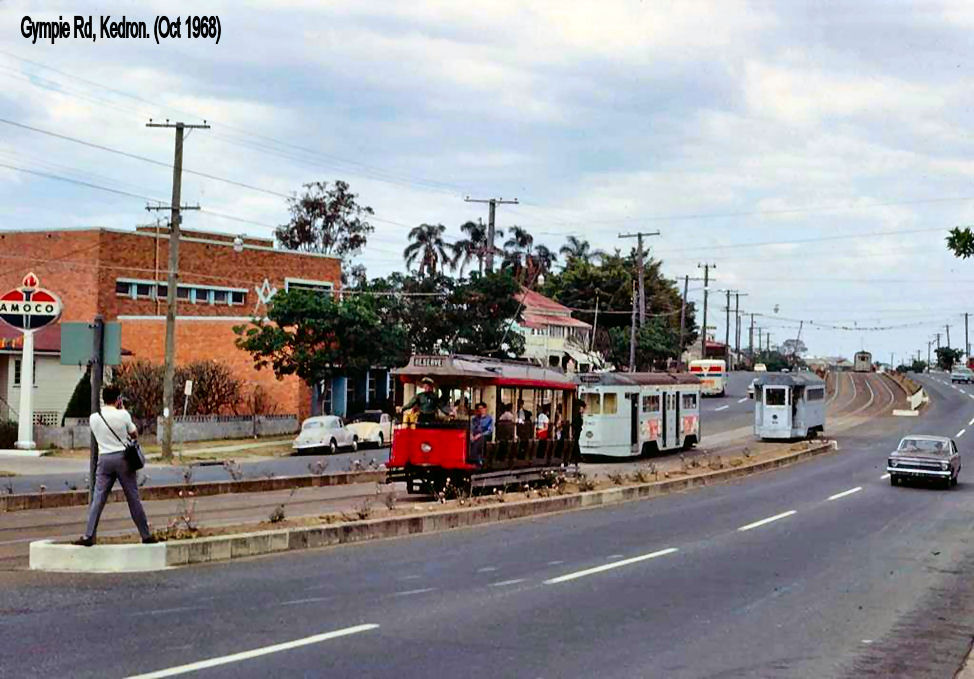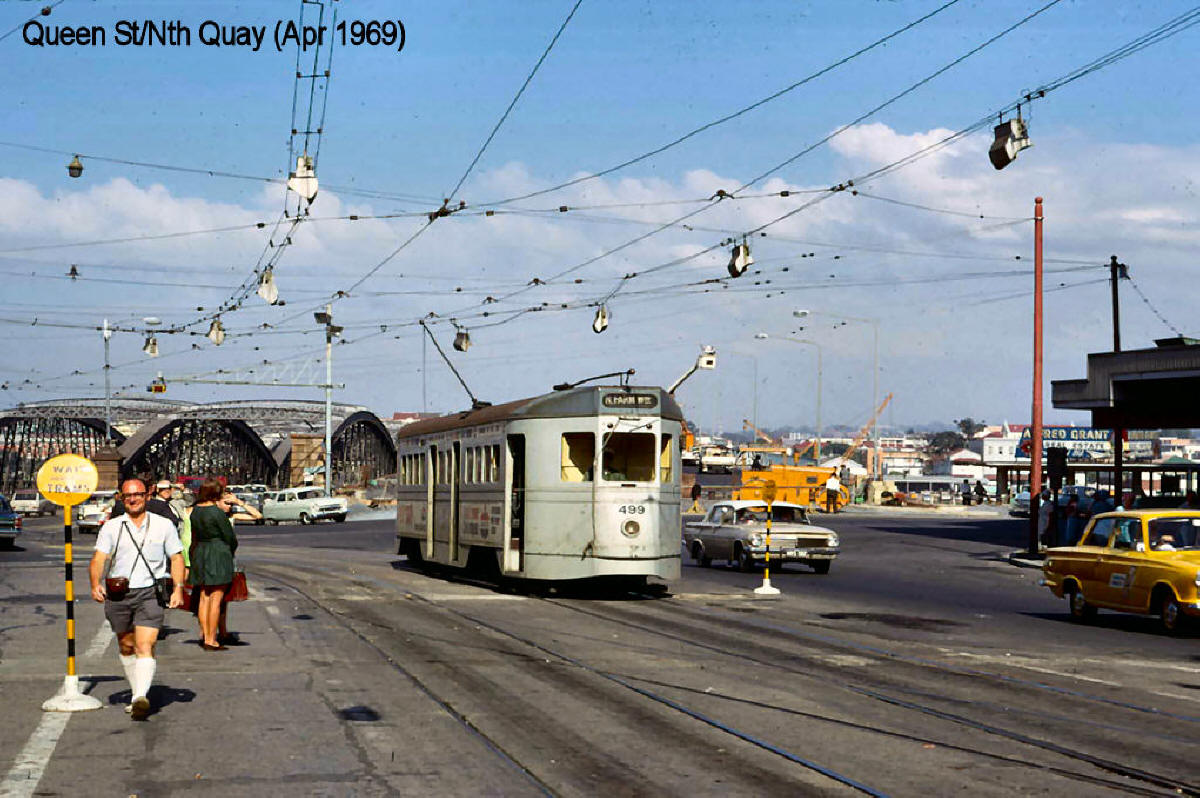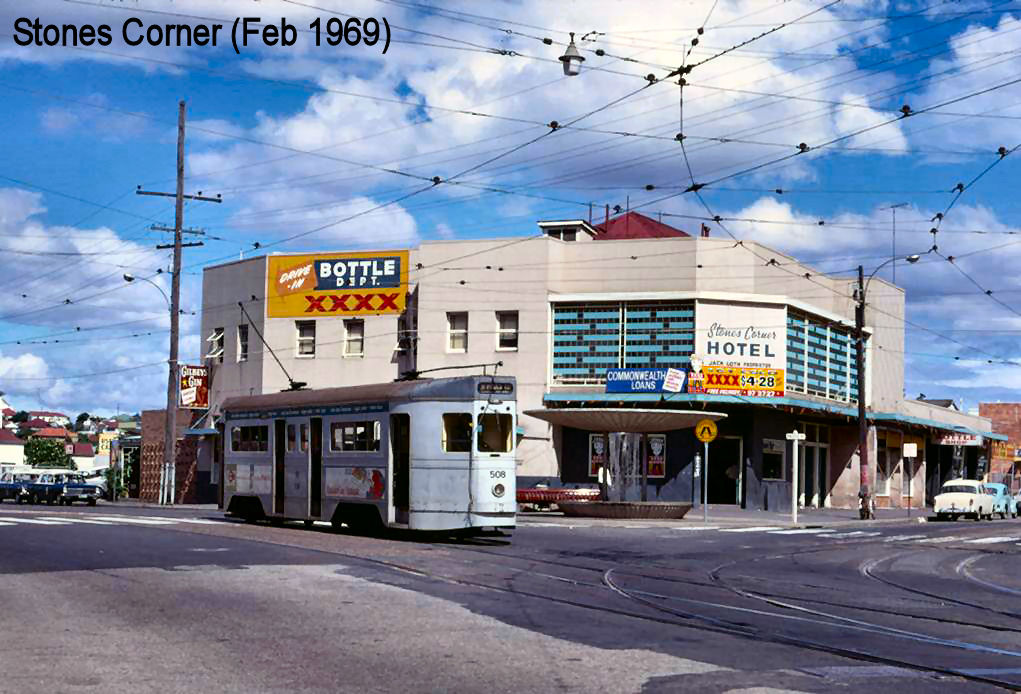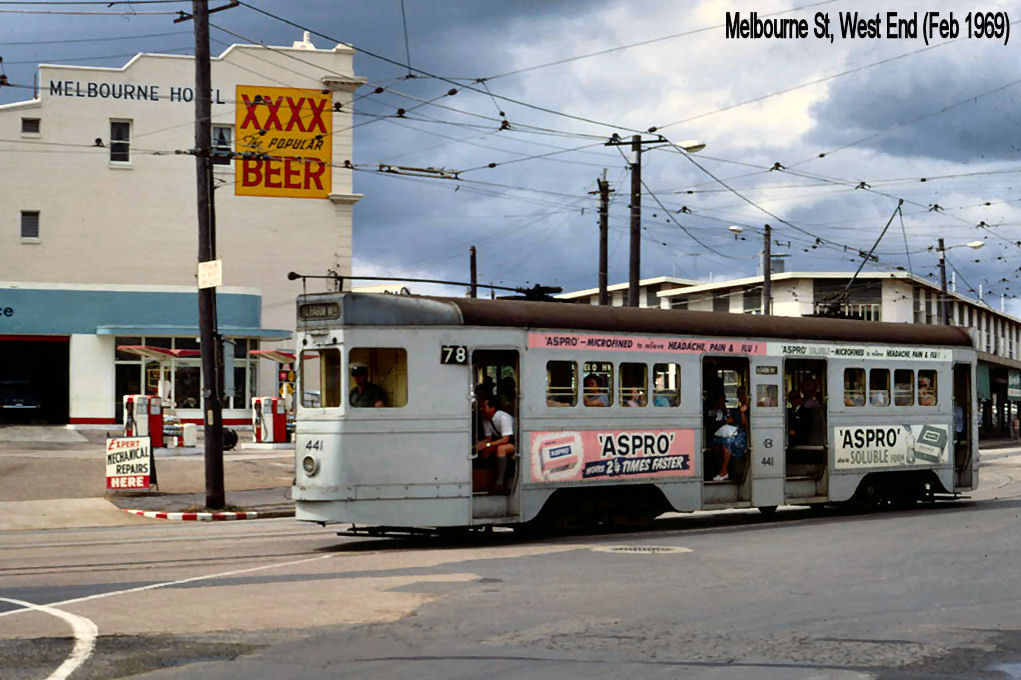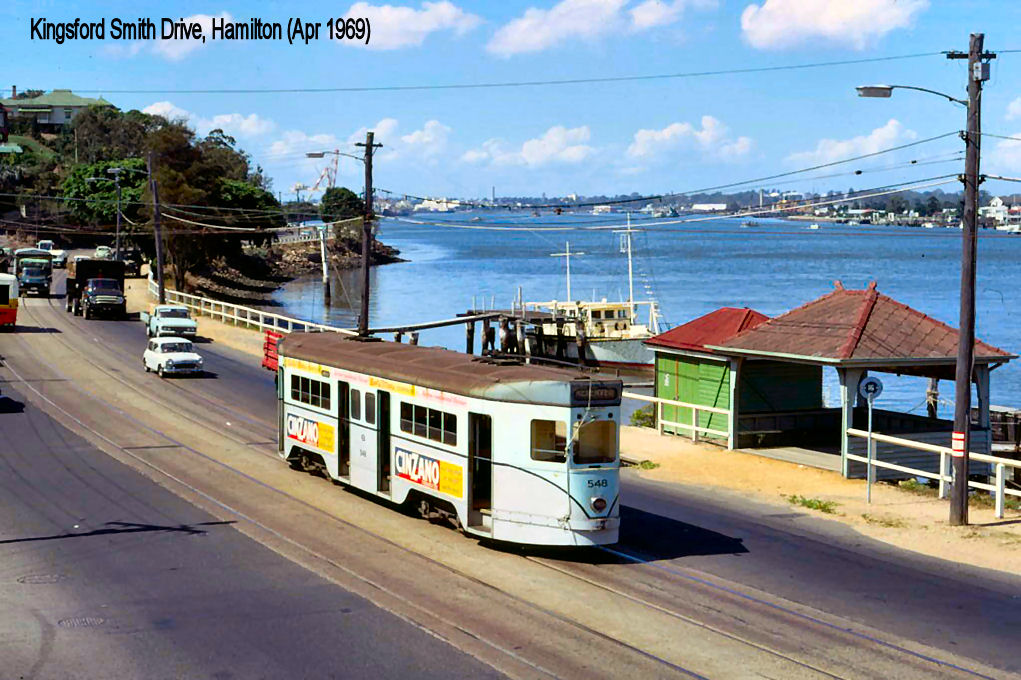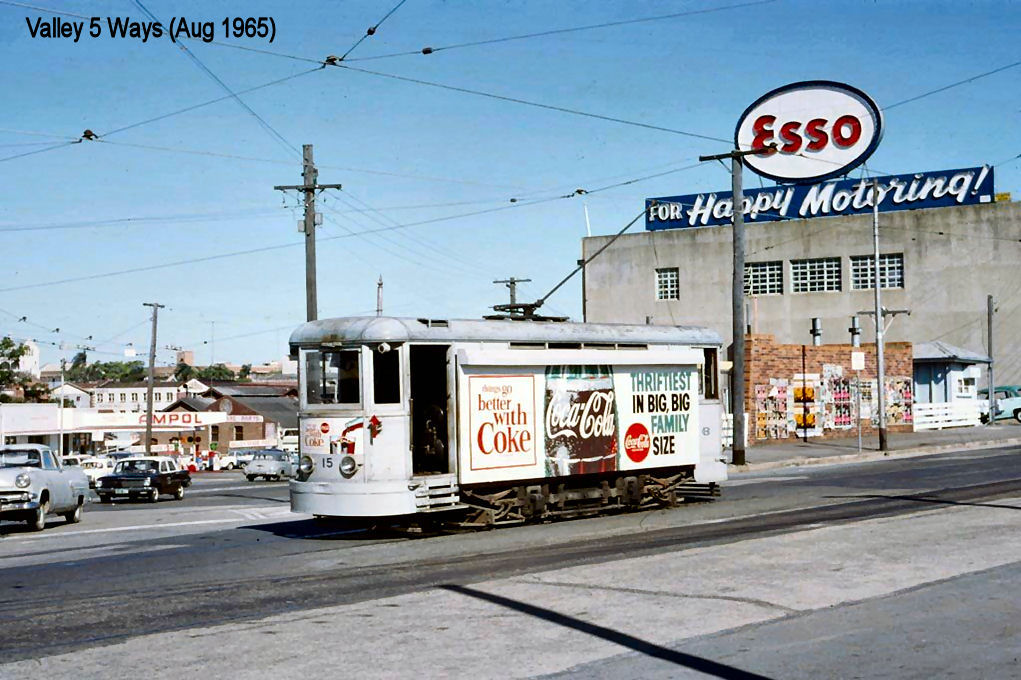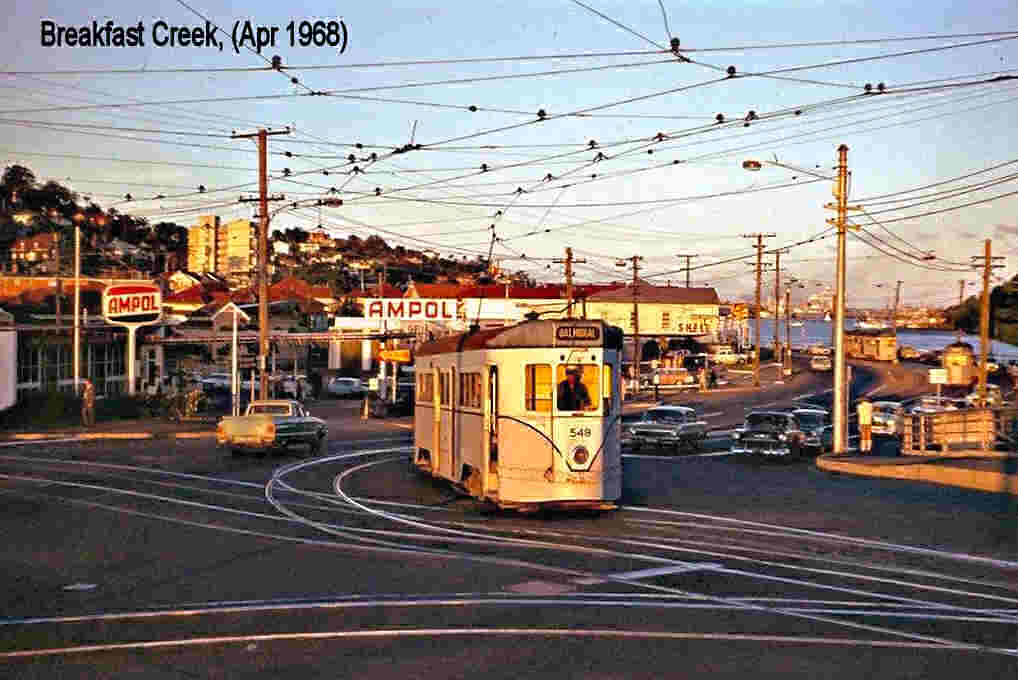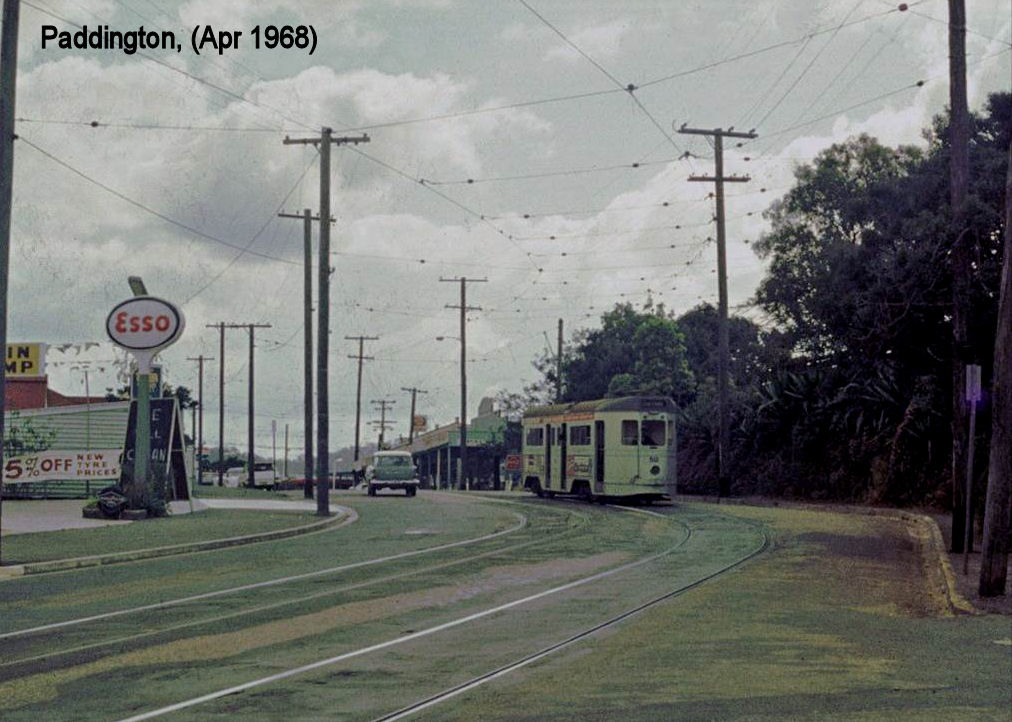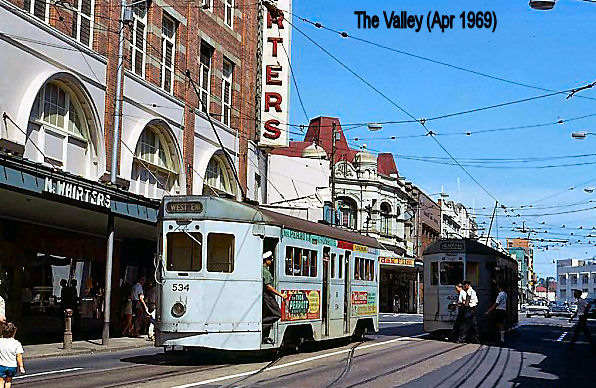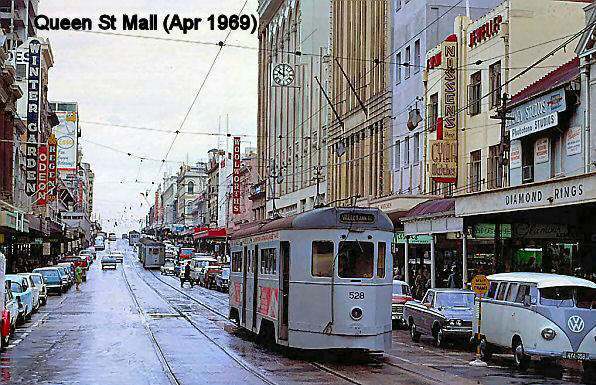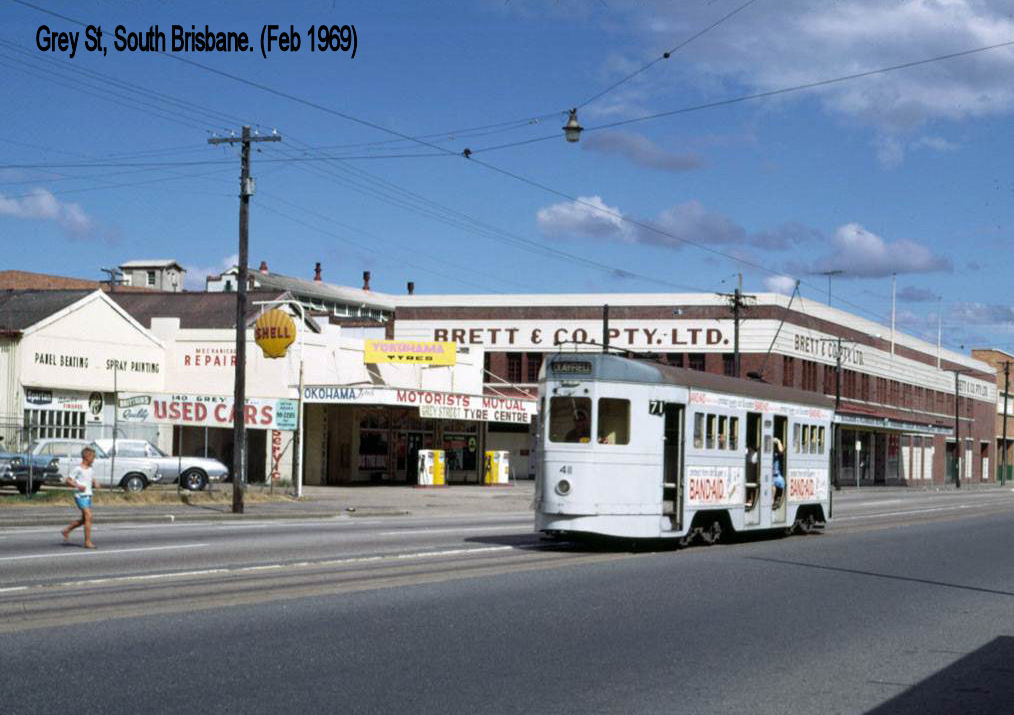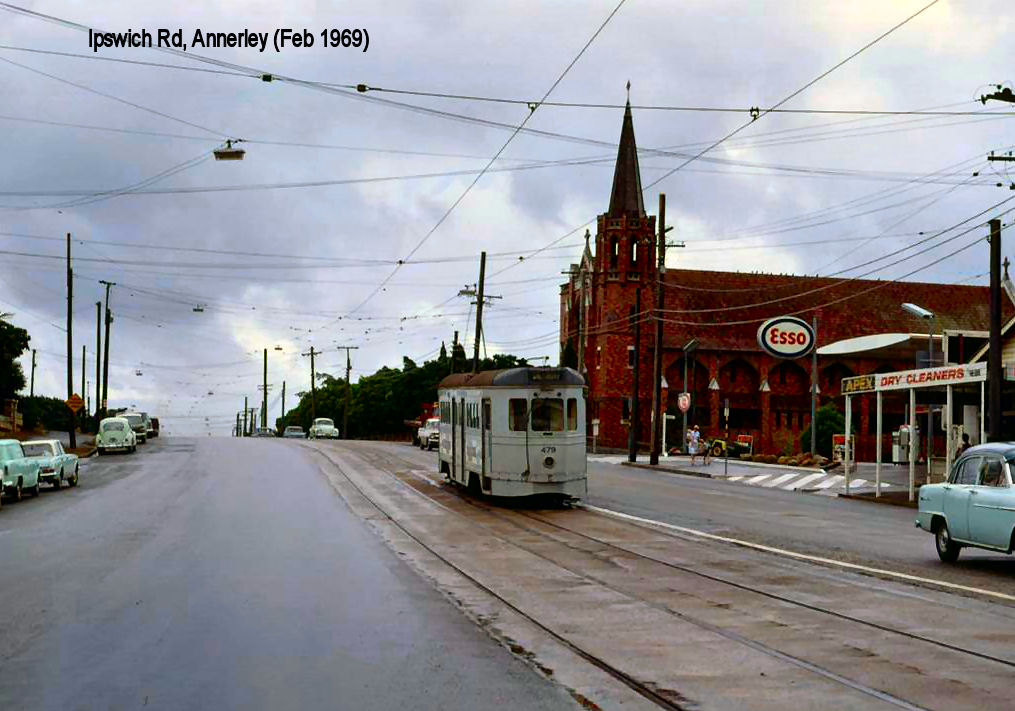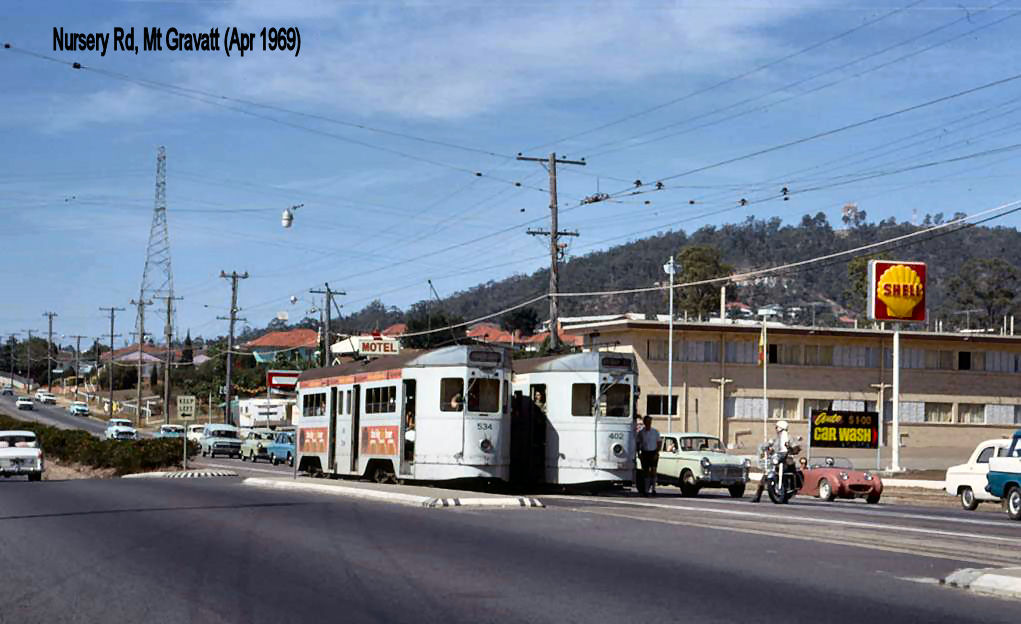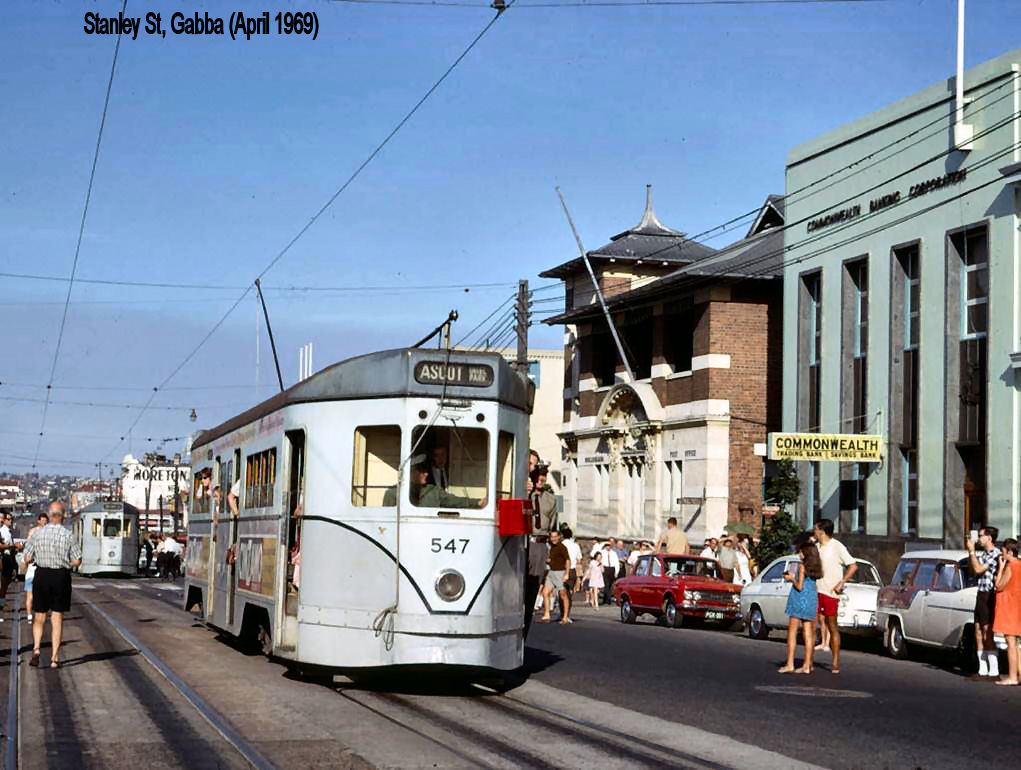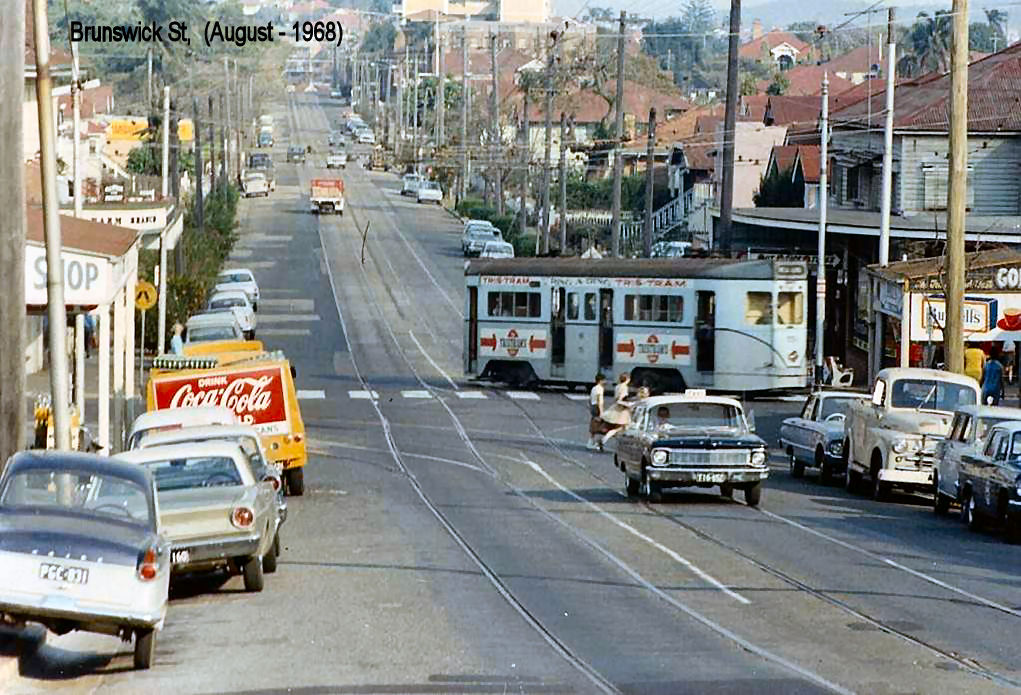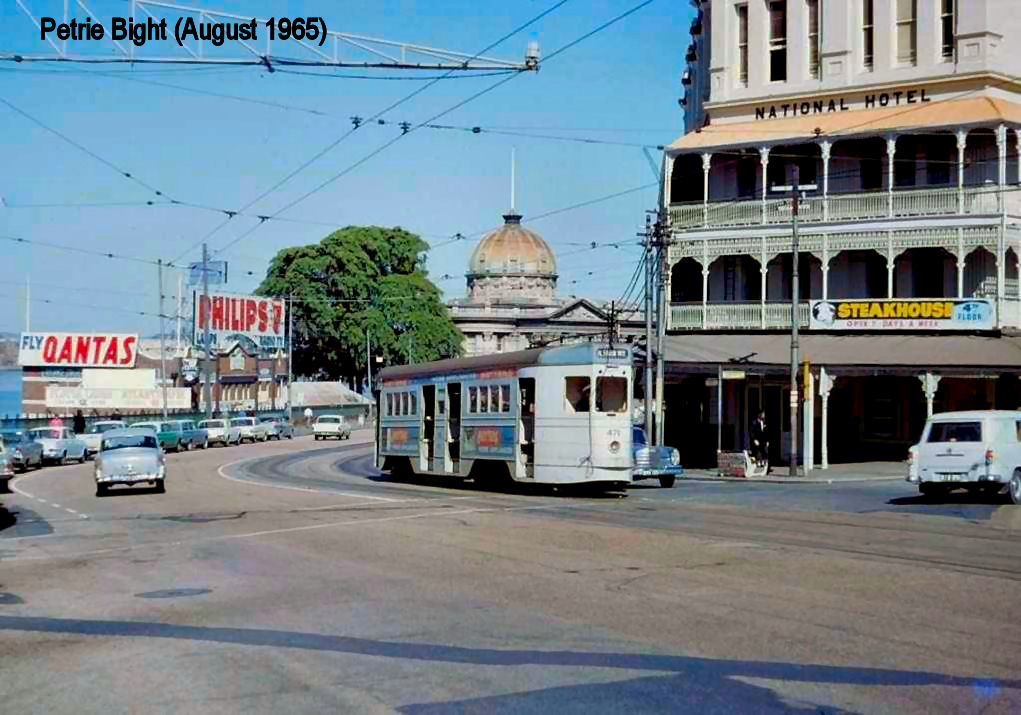|
|
|
|
Radschool Association Magazine - Vol 38 Page 12 |
|
|
Privacy Policy | Editorial Policy | Profit Policy | Join the Association | List of Members | Contact us | Index | Links |
|
|
|
|
|
Brisbane Trams.
Last issue we ran some photos of the old Brisbane trams, photos that are held in the Australian Publishing Newspapers (APN) archives. We got a lot of feed back on that article, it seems a lot of people were interested in seeing and remembering how Brisbane looked 50 plus years ago. We thought it would be a good idea to have a “then and now” series of photos, so we went and took current photos from the same spot that the earlier ones were taken back in the 1960’s. Now you can get an idea how much the best city in the world has changed in that short time.
Click on the small pic below, that will open another window with a bigger pic, run your mouse on and off that pic to see the site then and now.
Some areas have not changed all that much, others are completely unrecognisable. What is noticeable though is the huge increase in the 'greening' of the city, 50 years ago it seems trees weren't considered an important factor in the city's liveability - thank goodness that thinking has changed.
|
|
|
|
|
|
|
|
|
|
|
|
|
|
|
|
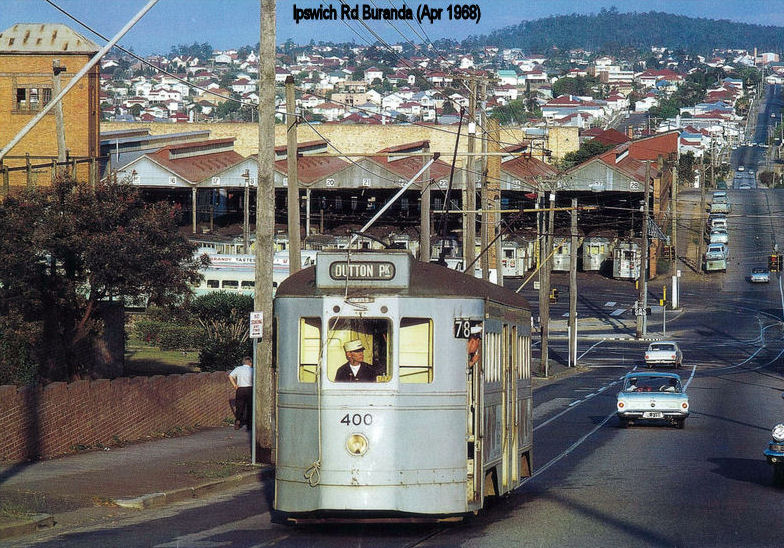 |
|
|
|
|
|
|
|
The Trams.
Brisbane had electric trams from 21 June 1897 to 13 April, 1969.
In October 1884, a contract was let by the Metropolitan Tramway and Investment Company Limited for the construction of six and a half miles of double track from Woolloongabba to Breakfast Creek with branches to the Exhibition Building and to New Farm.
At the same time eighteen tramcars were imported from America. In the words of the "Brisbane Courier" of the day they "are constructed of cedar and mahogany, highly polished, and are fitted with all the latest improvements. They are mounted on steel springs, making the motion almost imperceptible." The single deck horse drawn cars seat 16 passengers and the double deckers 40. Opening of the service was on 10th August 1885, when four magnificent roan horses pulled the first car from Victoria Bridge to the Exhibition, carrying a number of Brisbane’s chief citizens. Normally each car was drawn by two horses, an extra horse being used on steep grades. The initial service required a total of 100 horses.
Wagonettes carrying eight passengers each were added during the following year to extend the service from Breakfast Creek to the Hamilton Hotel. Eventually horse drawn trams ran on rails from the City to Exhibition, Breakfast Creek, Bulimba Ferry, New Farm, Logan Road and West End.
'OLD' IS WHEN... 'Getting a little action' means you don't need to take any fibre today.
On 30 September 1895, a company newly formed in London, called the Brisbane Tramways Company Limited, purchased the horse car system for £105,200 with the intention of converting it to electric operation and extending it. The electrical equipment for the tramcars was ordered from the General Electric Company of America.
The official opening of the electric system took place on 21 June 1897, when a tramcar was driven from Logan Road, Woolloongabba, to the southern end of Victoria Bridge. The service commenced with 20 tramcars running on 15 miles of track and by 1922 there were 181 tramcars and more than 42 miles of tramway routes.
On 19 January 1912, a three-week strike of tramway men commenced, the principal item of dispute being the desire of the men to wear a Tramway Union badge while on duty. A reduced service was operated by Company officers with some motormen and conductors who did not join the strikers. Feelings ran high and a large number of civilians were sworn in by the Police Department as special constables. New employees were taken on by the company and quickly trained but none of the original strikers was taken back until after the Tramway Trust began operating in 1923. A few years after the strike the Federal Arbitration Court granted the men the right to wear their union badges.
The first power station was located in Countess Street, where Roma St Station is today, and was commissioned in 1897 with three steam engines, each driving a 300kW 550-volt D.C. generator by means of a 17 foot diameter flywheel and 3 ft wide belt. Four hand-fired boilers at 150 lb steam pressure supplied steam to the engines. The 150 feet high brick chimney was a feature of the Brisbane landscape for over thirty years.
As the tramway system spread out into the suburbs, it was not possible to supply all the energy from the one point in Countess Street. In July 1913, additional generators were established in Light Street, off Breakfast Creek Road and Voltage in the system was increased to 600 Volts. In 1915, a third generator was established in Logan Road.
At the end of the First World War it was obvious that the tramway system had become a necessity for mass transport of the people and it was generally felt that it should be owned and operated by a public body rather than a private company. In June 1920 the Queensland Government appointed a Tramway Valuation Board to value the assets of the company, a figure of £1,063,231 being eventually arrived at. The Brisbane Tramway Trust was brought into being by an Act of Parliament and the Trust took over ownership and control on the 1st January, 1923, the purchase price being subsequently agreed at £1,400,000.
'OLD' IS WHEN... An 'all nighter' means not getting up to use the toilet.
The Greater Brisbane Act was passed by Parliament in October 1924 and on 1 October 1925 the new Brisbane City Council took over control and administration of the area previously covered by twenty cities, towns and shires. The Act required that the tramway system be handed over by the Trust to the new Council, and this was done on the 1st December 1925. From that date the system has been administrated by a Committee of Aldermen of the Council.
An adequate system of power supply to the trams was a matter for urgent attention by the Trust in view of the high cost of generation and the limited output of the three existing power stations at Countess Street, Logan Road and Light Street. It was obvious that the only economical method of feeding power to the trams would be a modern power station generating at high voltage alternating current and transmitting power to a number of substations at strategic points throughout the system.
The growth of the tramway system during the years of Council ownership is indicated by the increase in power substation plant from 8,500kW in 1928 to 24,200 kW in 1955.
The earliest electric tramcars were converted from the older horse-drawn cars and also some new electric cars were locally built. In the twenty-five years of the Brisbane Tramways Company's control the fleet was increased from 20 to 181 tramcars, most of these being built in Brisbane with imported electrical equipment.
The cars were of various sizes and types ranging from the combination car with seating capacity for 34 persons, through the 10 bench and 12 bench cars seating 50 to 60 persons respectively, to the centre aisle car seating 56 persons but with a capacity to carry 90 persons including standees.
When the Trust took over in 1923 there were about 30 of these centre aisle cars or Dreadnoughts, as they were popularly called. They were the first cars to have the conductor operating entirely inside the car instead of from the running board. Their disadvantage was that the entrances and exit were at the ends only, causing them to be slow in loading and unloading. However, since more cars were urgently needed and no other designs in detail were available at the time, the Trust made immediate arrangements for the construction of a further 26 of these cars, mostly by private Brisbane firms.
In September 1962, a disastrous fire destroyed the Paddington tram depot in which about one fifth of the tram fleet was lost. This event hastened the conversion of some routes to buses but it was evident that a few new tramcars would still be needed. Some trucks, wheels and other parts were salvaged from the Paddington fire and using these, eight new tramcars of the modern F.M. type were built in 1964. These were given the title "Phoenix" bearing witness to the mythical bird rising from the ashes of its own funeral pyre.
OLD' IS WHEN... 'Getting lucky' means you find your car in the car park.
The decision to discontinue the use of trams in Brisbane, in favour of a complete diesel bus system, was made in June 1968. This decision was inevitable in view of the loss of a huge part of the fleet in the fire and also because of the adopted scheme of future highways and expressways for the city and the old steel Victoria Bridge was replaced by a concrete structure without tram tracks.
In 1925 the number of passengers carried per annum by the trams was about 82 million. The number dropped somewhat during the depression years until at the beginning of the War in 1939 it had risen again to about 92 million. During the War years due to petrol rationing and other causes, the passengers per annum rose rapidly to 160 million for the year 1944/45.
After the War the increasing use of the private motorcars and the growth of the Council's bus fleet gradually reduced the number of tram passengers to 110 million in 1950 and about 80 million by 1960. By 1969 when the tramway services were finally discontinued the annual number of tram passengers had dropped to 46 million. The annual number of bus passengers at the same time was 30 million, which showed a very considerable decline in the use of public transport during recent years.
For seventy-two years the electric tramcar had been the basic means of public street transport for the city of Brisbane and filled this role with undoubted distinction and general satisfaction. It was superseded by a more modern and flexible means of transport. However, as the city grows still further, it may be that the tram's big brother, the suburban electric railway system will become of major significance in carrying the people of Brisbane to and from their homes and about their daily business.
Click HERE to see the tram route north of the Brisbane river and HERE to see the route south of the river.
|
|
|
Why is it so??
When you look at the pic below, something weird happens, but you have to look at it on a computer screen, it doesn’t work on those little Blackberries or i-things .
Here’s what you do, click the pic to open it in a bigger screen. Stand up and walk backwards, continue to look at the face of Einstein – slowly as you walk back, Einstein changes into Marilyn Munro.
|
|
|
|
|
|
Now, just how reliable do you think eye witnesses are??
|
|
|
|
|
|
Back Go to page: 1 2 3 4 5 6 7 8 9 10 11 12 13 14 15 16 17 18 19 20 Forward
|
|
